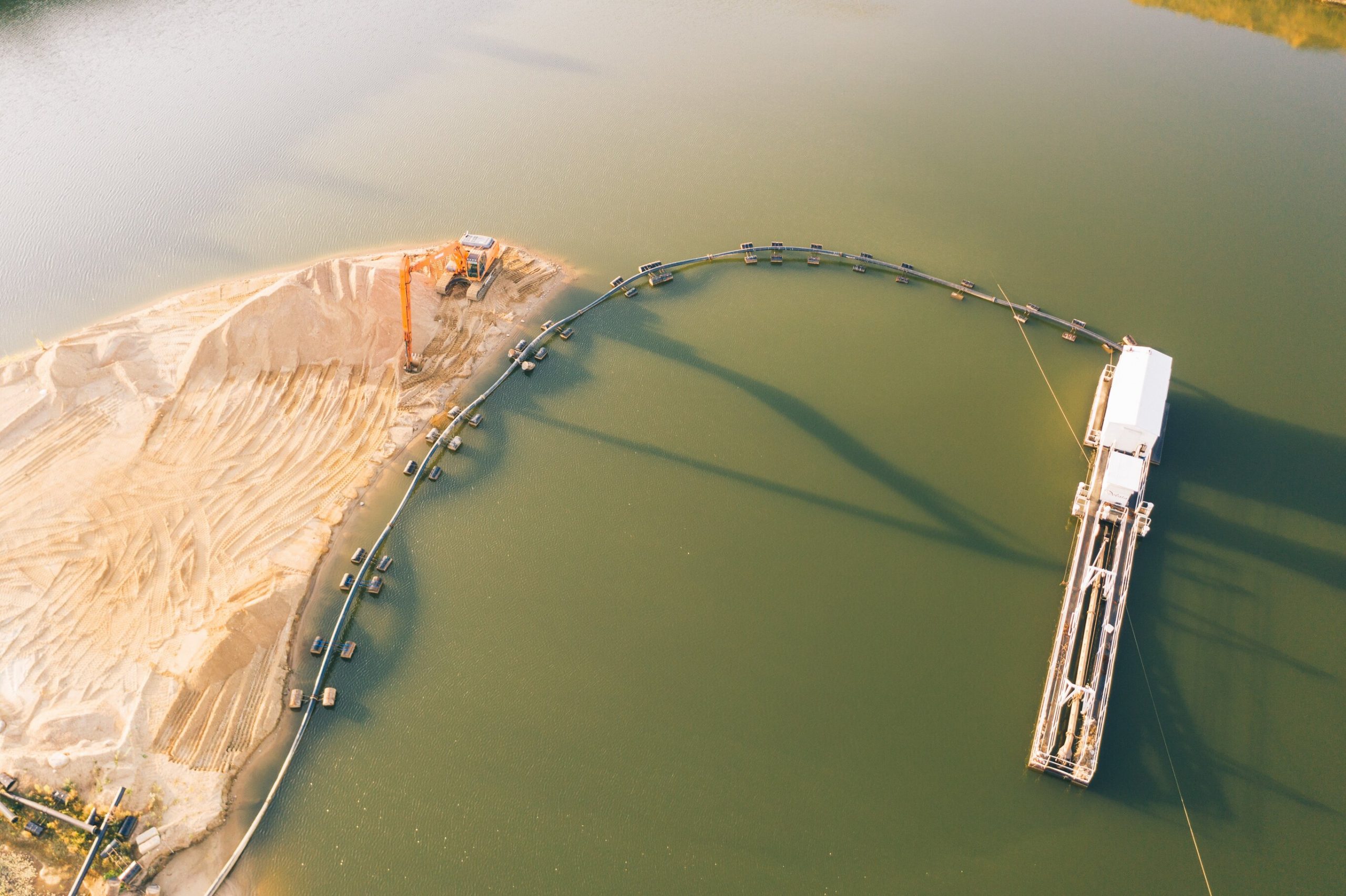Names like McCall MacBain Arts, Redpath Museum, or Stewart Biology may bring to mind lecture halls and study spots, but all these McGill landmarks have at least one more thing in common: They all use concrete in their construction. Just about every infrastructure project in Montreal, and across the world, relies on the sand and gravel mining industry. These materials are used as aggregate—a mixture of sand, gravel, and crushed stone used to produce construction materials such as concrete and asphalt—and are then incorporated in infrastructure projects such as bridges, roads, and walkways.
At around 23 billion tonnes annually, concrete is the second most consumed material in the world, after water. The sand and gravel used in concrete production are the most mined materials globally, with 32 to 50 billion tons extracted each year. Despite the size and scale of this industry, the human and environmental impacts of sand and gravel mining, especially in low- and middle-income countries (LMICs), are not yet well understood.
To fill this research gap, Mette Bendixen, assistant professor in the Department of Geography at McGill, and her colleagues set out to review and assess the effects of sand and gravel mining in LMICs, especially as they pertain to the United Nations Sustainable Development Goals (SDGs).
“Sand is definitely a complicated topic that interacts with fields including science and health,” Bendixen said in an interview with The McGill Tribune. “It is a global challenge that is often overlooked. So many people don’t know that it’s such a highly used commodity.”
In an article published in One Earth, Bendixen and other researchers from institutions around the world argue that aggregate mining can alter local topography and damage surrounding freshwater and marine ecosystems. Not only do these mining activities affect the health of the environment and its flora and fauna, but they also affect human health. Some of the potential health effects of sand and gravel extraction include respiratory diseases from the inhalation of small crystalline particles, as well as exposure to environmental contaminants such as arsenic, lead, and cyanide.
The communities most impacted by sand and gravel mining are often the most marginalized in their local contexts. The article notes that the low-income and uneducated workforce is heavily dependent on aggregate extraction, and that these populations are particularly vulnerable to poor health outcomes such as lung cancer and silicosis. Artisanal and small-scale miners in LMICs, controlled by sand mafias, are often criminalized and subject to violence as well.
“[Miners] are not criminals. They are just trying to make a living,” Bendixen said. “Actually, sand and gravel mining can provide a relatively good income.”
Bendixen and co-authors explain that communities, especially in LMICs, need extractive industries to provide jobs and build infrastructure, which are key elements of the United Nations’ SDG. For instance, children from these families can afford to go to school, furthering SDG 4’s goal of quality education for all. For these reasons, Bendixen believes it is not productive to ban mining activities outright, but instead advocate for better solutions, including circular material usage—a concept supporting the necessity of reutilizing already-consumed resources.
“We, in high-income countries, have the moral obligation to reuse the material we already have,” Bendixen said. “We should try and look for other alternatives.”
This call to action begs the question: Do McGill’s buildings and roads use materials that are eco-friendly? Bendixen thinks not, although she says it is often hard to tell where building materials come from.
“I would be surprised if the resources were sustainably sourced,” Bendixen said. “There are very few incentives to use recycled materials.”
Bendixen compared the situation to the looming threat of climate change, and believes that it is the responsibility of governments to implement solutions.
“We need political leadership,” Bendixon said. “Just as we are committing to limiting global warming to 2°C, we must commit to the circular approach, to reusing materials.”






